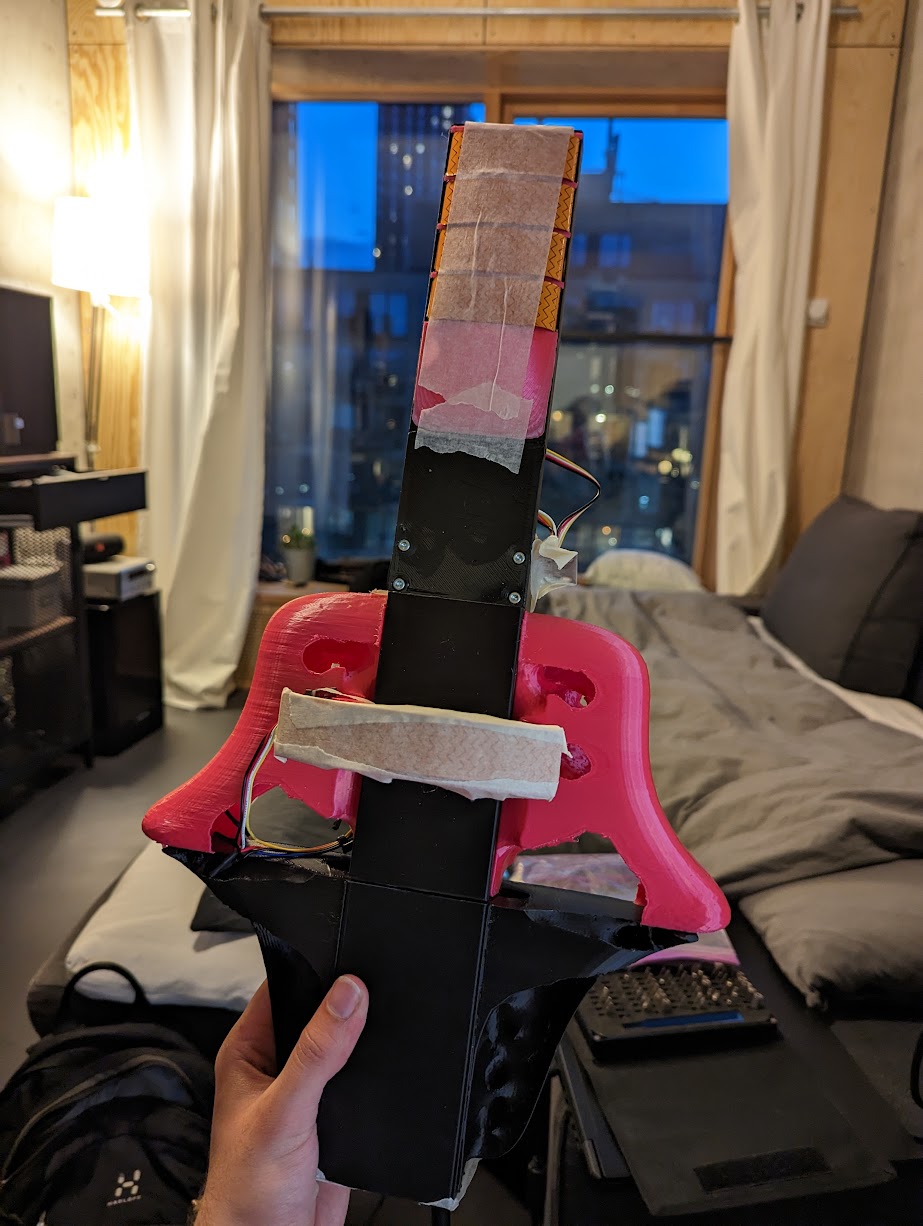Project Overview
The baryton is an instrument, which is both bowed and plucked. It also features sympathetic strings, which resonate with the bowed strings. In this age, it's a rather rare instrument so research was done in collaboration with the National Museum of Denmark.
The objective of this project was to digitize the baryton within a physical body, while maintaining analogous interactions. I was in charge of designing the instrument along with those interactions.

Working from Aalborg University's manufakturet lab, we utilized a 60-watt CO₂ laser cutter, Ultimaker S3 and Creality CR 10 S5 3D printers. The laser cutter offered efficiency for large, 2D components but imposed design constraints, while the 3D printers, despite their slower speed and limited build volume (230 x 190 x 200 mm), proved ideal for producing intricate parts in polylactic acid (PLA). SolidWorks was used to create detailed 3D models, with technical drawings outlining the assembly, dimensions, and fastening details. For instance, all fasteners were standardized to M3 screws and bolts, though some mechanical joints revealed potential overconstraints. A design insight that suggested a dovetail slot might be a better solution.
The project incorporated the Bela mini, a low-latency computing platform ideal for digital musical instruments (DMIs), paired with Pure Data for sound processing. The instrument simulated bowed and plucked strings using digital waveguides. Capacitive Trill flex sensors, flexible, one-dimensional touch sensors with force sensitivity, were chosen to capture nuanced performance gestures. However, initial plans to use a conductive rubber string for plucking inputs were adjusted to buttons after discovering space limitations in the 3D printed body, and due to time constraints the buttons were ultimately not implemented.
_Camera_Top down_Beauty.jpg)
Low-fidelity prototypes were essential for refining the instrument's ergonomics and proportions. Early iterations, built from composite wood using the laser cutter, revealed that the first design was too small, prompting a scaled-up second prototype. Informal user testing yielded mostly positive feedback, with minor concerns over the sharpness of certain features. These iterative prototypes were instrumental in verifying design benchmarks and guiding modifications.
While the digital baryton represents a blend of interaction design and modern digital synthesis, it also highlights the challenges of adapting an extinct instrument to contemporary technologies. This project taught me the importance of rapid prototyping tools and the pros and cons of each method provided.
_Camera_Front Camera_Beauty.jpg)